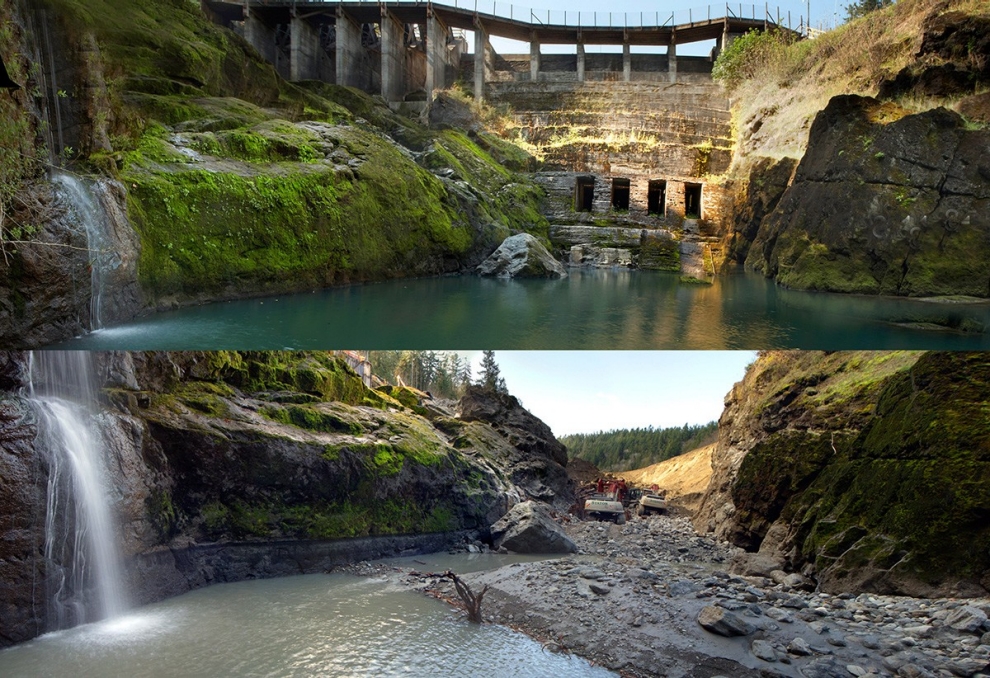Historically, the Elwha River was among the region’s most productive rivers, home to 10 varieties of anadromous salmon and steelhead trout. These fish are born in freshwater creeks, then spend their adulthoods mining the vast nutrients of the sea. They make a final journey home to mate and die, feeding bears, eagles and insects as they decompose.
But the illegal damming of the Elwha River for hydropower in the early 20th century — without passages for fish, in violation of an 1890 law — blocked off 90 percent of upstream spawning ground for some 400,000 fish and turned the legendary king salmon, or chinook, into myth. The Klallam (“strong”) people, like the salmon they depend on for food and spiritual sustenance, were displaced and dwindled in number. There are now fewer than 700 Lower Elwha people, according to the U.S. Census; the tribe counts approximately 1,000 registered members.
In 1992, the tribe won a long battle to remove the dams and rehabilitate the entire watershed. The Lower Elwha and their federal partners — the National Park Service, Fish and Wildlife Service, Bureau of Reclamation, National Oceanic and Atmospheric Administration and U.S. Geologic Survey — took the lead on this vast, $325 million project. The first blast of dynamite came in 2011; last year, the Elwha River saw its best returns of fish in three decades: 4,500 adult chinook and 1,200 steelhead, the two most critical species.
But some of the restoration work is unfolding at a new hatchery on the Lower Elwha reservation. There, thousands of spawning adult fish are captured for their sperm and eggs, resulting in millions of artificially bred juveniles. The tribal hatchery is controversial: a dark stain upon a rare, hopeful environmental story.
Note from Storm: I keynoted a scientific conference on the Elwha River dam removals and river restoration at Peninsula College in Port Angeles, WA back in 2007. Local officials kindly took me on an extensive hike of the river system, when the dams were still in place. I consider this to be one of the most important projects on Earth. This is partly due to the sheer importance of the ecosystem itself, and partly due to the example it sets for the world. Our planet’s freshwater systems have been killed or crippled by a plague of hundreds of thousands of dams. Many of them never had a good reason for existence in the first place (especially in the U.S., where the Army Corps of Engineers built thousands merely to justify its budget), and many of those that did serve a good purpose no longer do, due to sedimentation, obsolescence, or decrepitude.
I spoke with Nathan A. West, AICP, Director of Community and Economic Development at the City of Port Angeles in April of 2015. He told me that tourism and lodging taxes are at record highs since the dams came down and the river started coming back to life; a testament to the economic value of environmental restoration. What’s more, confidence in the future of the town is also at an all-time high, with Port Angeles having won both “Top 10 Cities in Washington” and “Top 10 Cities Nationwide” designations in 2014. More recently, BusinessInsider.com named Port Angeles one of the “20 coolest towns in U.S. 2015”, and mentions the Elwha River restoration as a factor in that decision.

